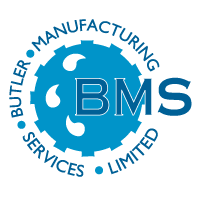Sewage Treatment Terminology Explained A-Z Part 3; C to E; Clarifier to Eutrophication
Welcome to our education blog explaining terms used in sewage treatment from A-Z. Part 3 is from Clarifier to Eutrophication.
Week 3 of our series explaining terms/jargon/terminology used in the area of sewage or wastewater treatment sees us concentrating on terms beginning with 'C-E'. The terms are; Clarifier, COD, Combined System, Denitrification, Dry Weather Flow, Effluent, Effluent Treatment Plant/System & Eutrophication.
14. CLARIFIER: See HUMUS TANK
15. COD: It is a test of the amount of oxygen required to oxidise organic matter in a SEWAGE sample by chemical oxidation with a powerful oxidising agent such as Potassium Dichromate. It is usually a multiple of the BOD.
16. COMBINED SYSTEM: A SEWERAGE system in which both FOUL and SURFACE WATERS are conveyed in the same sewer. Combined systems often deliver large flows to a SEWAGE TREATMENT PLANT in wet conditions. This should be included in any plant design.
17. DENITRIFICATION: A biological/chemical process whereby NITRATE (NO3) is converted to NITROGEN (N) and Oxygen (O2) gas, which is then given off into the atmosphere, in an ANOXIC zone. It is the only way to reduce TOTAL NITROGEN.
18. DRY WEATHER FLOW (DWF): The average daily SEWAGE flow entering a plant measured following 7 days without rain (excluding local or Bank holidays etc.) and during which on the preceding 7 days, rainfall did not exceed 25 mm on any day.
19. EFFLUENT: The discharge from a SEWERAGE System into a Treatment Plant (See also Influent) and sometimes the discharge from a SEWAGE Treatment Plant (See also Final Effluent). Generally, a term used to describe waste and wastewater products from a premises, system, process etc.
20. EFFLUENT TREATMENT PLANT/SYSTEM: See SEWAGE TREATMENT PLANT/SYSTEM.
21. EUTROPHICATION: Where water becomes organically enriched, leading to increasing domination of aquatic plants, transformation to marsh land and eventually to dry land over time.
BMS Education Blog/Customer Questions section is also an excellent source of information on sewage treatment and its terminology. More detailed explanations of parameters used to measure final effluent quality can be found by clicking on the links e.g. BOD, SS, NH4, N, COD & P.
The next article will explain terms/jargon used in sewage treatment from F to K; Ferric Sulphate to Kjeldahl Nitrogen.
If you have any questions of would like information on package wastewater treatment products, please do not hesitate to contact us.
A bit about the company:
BMS is a quality manufacturer of package products for wastewater and stormwater treatment. BMS started in 1986 and has exported products to over 50 countries around the world. It is a third generation family business with huge expertise in wastewater and stormwater.
BMS manufacture a full range of products for surface water and wastewater treatment including our pioneering next generation RBC system the Aerotor, which forms part of our world leading Blivet package sewage treatment plant, a ‘one stop shop’ for all surface water products from design to installation including attenuation, interceptors, holding tanks (incl. chemical resistant), hydrobrakes, rainwater harvesting tanks & vortex silt/oil/debris separators, fully fitted pumping stations, our plug & play vehicle wash water recycling system; the Recyclone and much more. All BMS products manufactured in our ISO 9001 factory are made using solar energy from our own PV system.
BMS also can provide a Free Design Service for Sewage Treatment, Pump Stations or Surface Water and a full O&M, Repair, Advice and Testing service for existing installations. We also can do free CPD Presentations on Sewage Treatment/Surface Water Management at any location.
We would be delighted to discuss any requirements you might have and we are available to meet you at your convenience. Please do not hesitate to contact us.
© Butler Manufacturing Services 2024.

